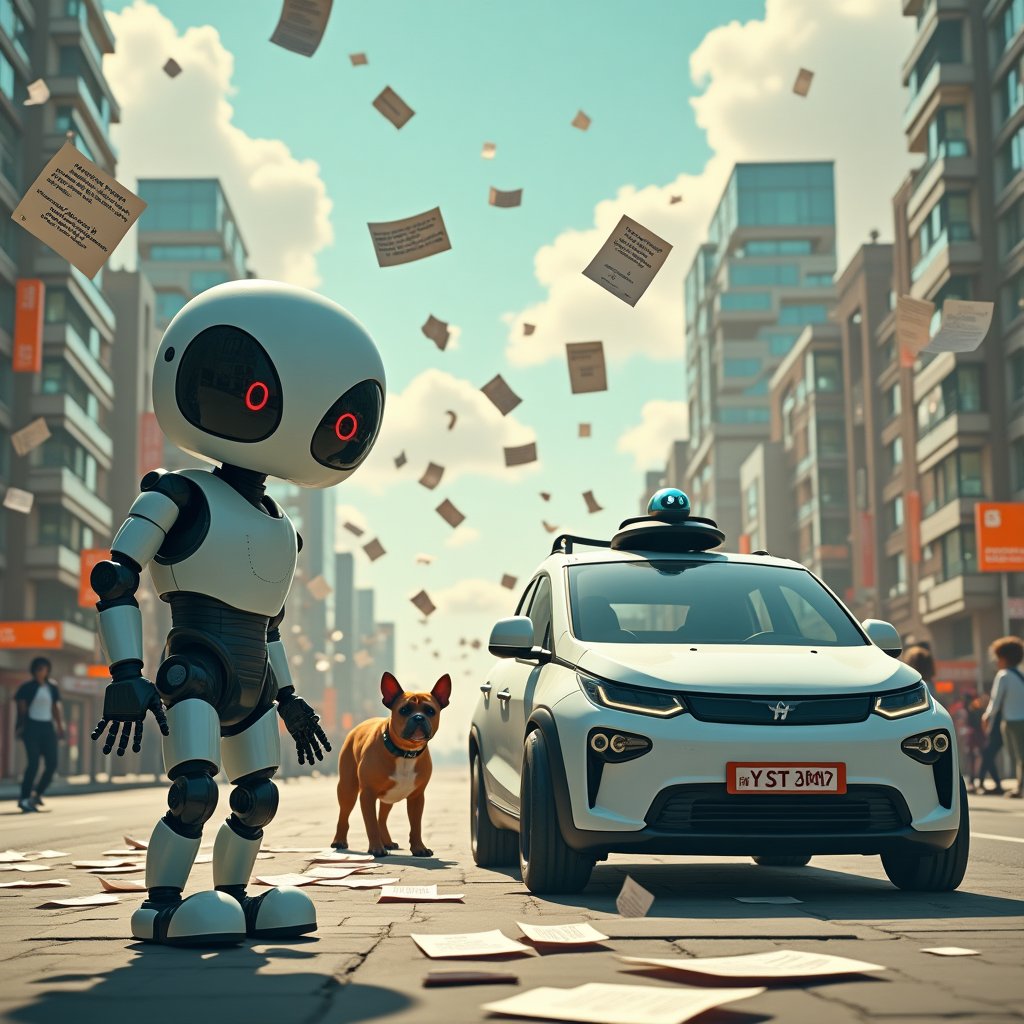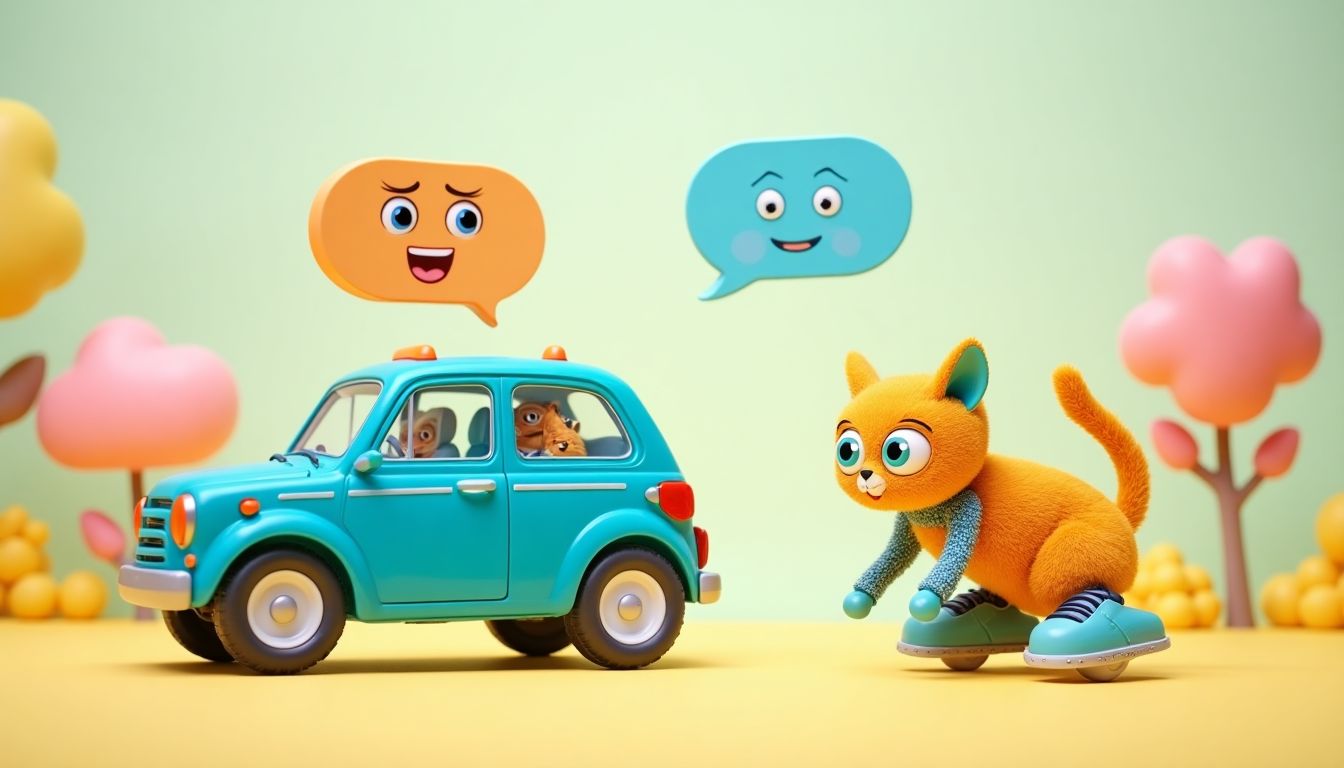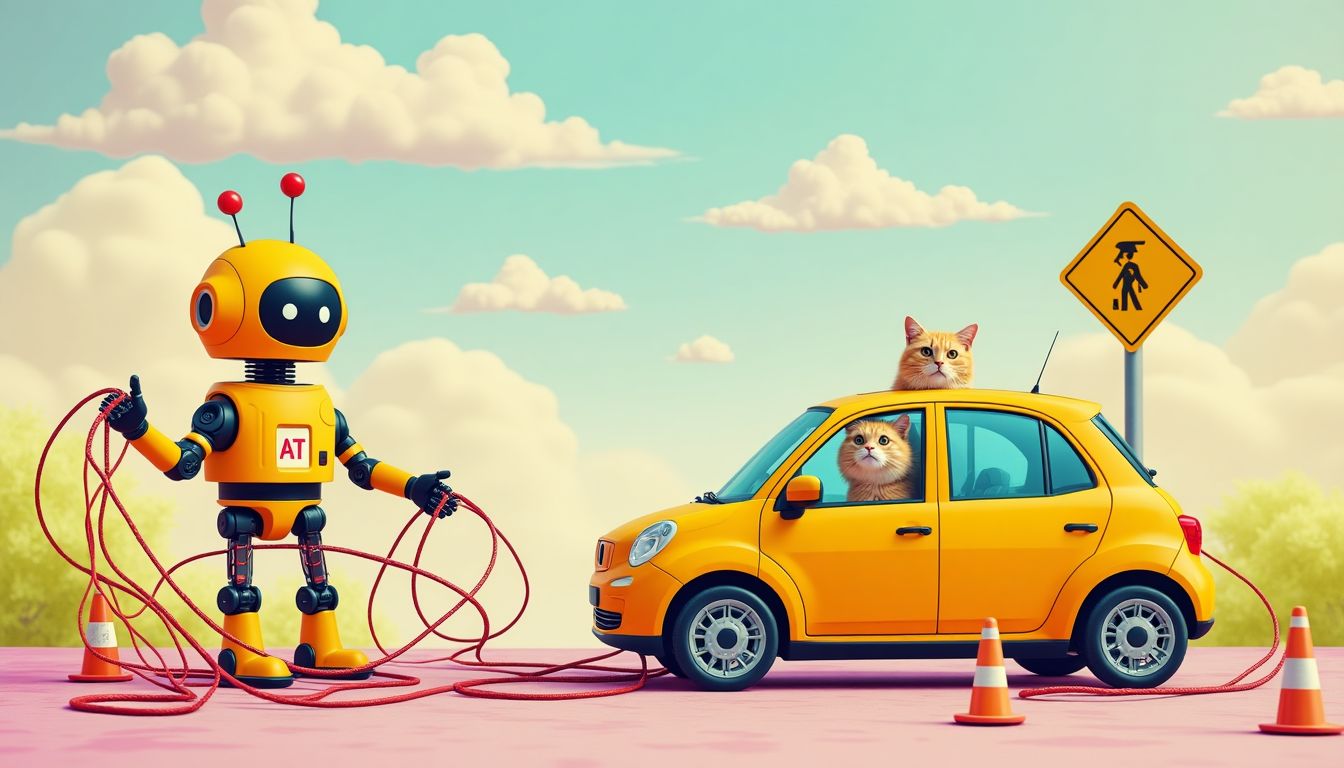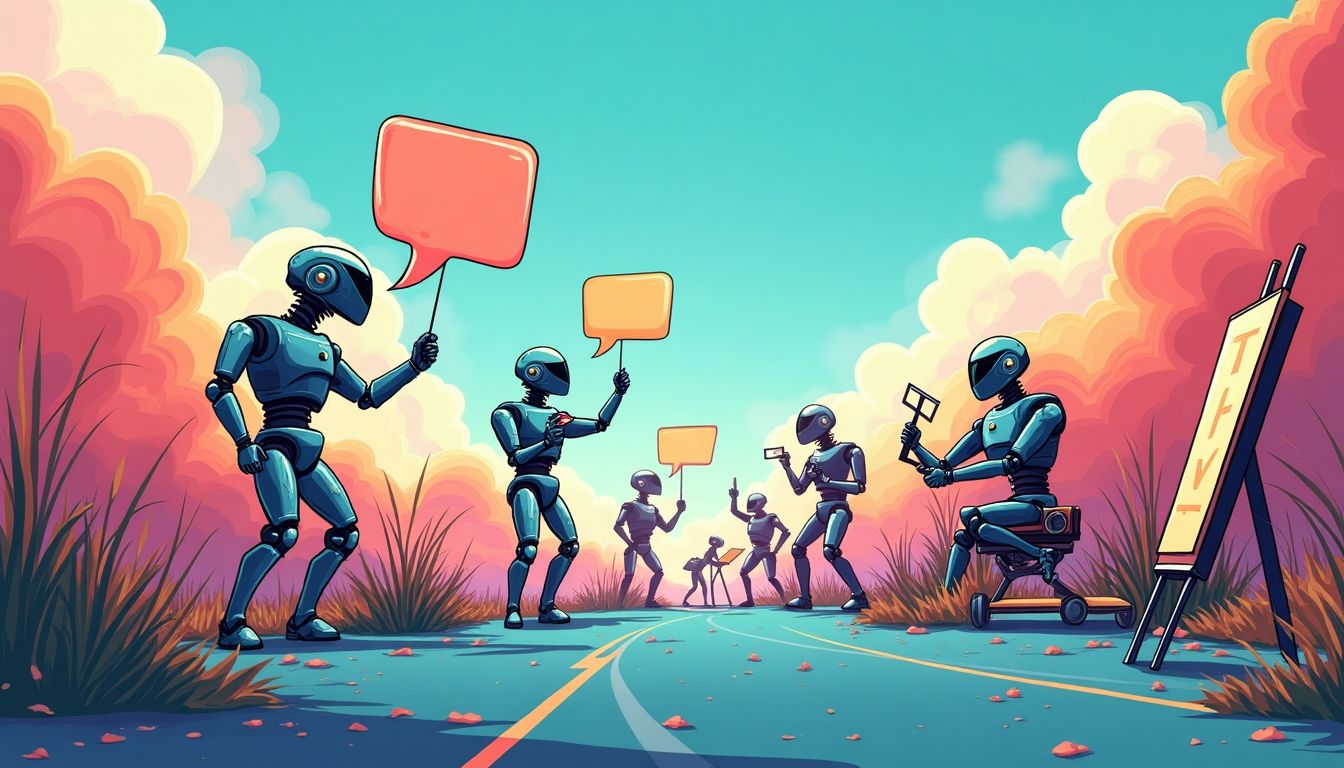Introduction: A Humorous Take on AI Fails
The greatest danger in times of turbulence is not the turbulence—it is to act with yesterday’s logic. In the rapidly evolving world of artificial intelligence, this quote rings true. As technology races forward, our understanding of its quirks and flaws often lags behind. When AI misfires, it doesn't just lead to small mishaps; it can create hilarious blunders that range from embarrassing text messages to customer service catastrophes. This contradiction—a technology designed to make our lives easier often stumbling on the simplest of tasks—illustrates both the promise and the peril of artificial intelligence.
Have you ever felt a shiver down your spine when your smartphone's voice assistant completely misunderstood your request? Or cracked a smile when an autocorrect turned "Let's have a meeting" into "Let's have a melting"? These moments highlight why AI's journey is sometimes a rollercoaster ride of laughter, confusion, and the occasional heart-pounding moment. Let’s dive into the funniest and scariest AI fails that remind us of the technology's limitations, while simultaneously providing opportunities for improvement.
As renowned author and scientist Penny Arcade notes, The future is not about predicting; it’s about creating. This couldn’t be more relevant in the context of AI, where both the triumphs and the missteps fuel conversations that pave the way for tomorrow’s innovations. Let's explore the delightful and alarming, enlightening ourselves in the process.
Definition
AI Failure: A situation where artificial intelligence systems inaccurately process information, leading to unintended outcomes that can range from comedic misunderstandings to severe service disruptions.
1. The Great Autocorrect Blunders
One of AI's most infamous failures lies in its text prediction capabilities, particularly in autocorrect features. Autocorrect is designed to enhance our typing experience, but often, it creates humorously disastrous results.
1.1 Misunderstood Contexts
Examine situations where autocorrect turned innocent messages into cheeky or risqué texts, highlighting the contextual failures of AI's language processing. Imagine telling your friend about a new recipe and suddenly declaring your love for "cooking them," instead of "cooking." We’re not sure if that’s a compliment or a criminal offense!
1.2 Case Studies: Viral Autocorrect Fails
Analyze specific viral instances of autocorrect fails, showcasing the unintended hilarity that ensues. One famous case involved a father texting “I’m going to pick up the kids” but ended up sending “I’m going to pick up the kids' urns.” The internet couldn't get enough of this, leading to a wild meme frenzy. It just goes to show how a simple slip-up can spiral into shared amusement, illustrating the unpredictability of AI's language processing capabilities.
2. AI in Customer Service – From Bots to Blunders
As businesses increasingly turn to AI-driven chatbots for customer service, the absurdity of machine mishaps becomes evident. These virtual helpers are designed to make our lives easier, but sometimes they throw their metaphorical hands in the air and say, "What?!" Imagine ordering a pizza and ending up with a llama instead—welcome to the world of AI chatbots!
2.1 The Confused Chatbot Conversations
It’s entertaining when chatbots misinterpret user queries, leading to ludicrous exchanges. For example, a customer asks about the price of a hotel room and the chatbot replies, “The weather today is great for a picnic!” Not quite sure how we got from room rates to outdoor dining, but okay!
Another classic happened when someone asked a banking chatbot about transferring funds, and it replied with a recipe for pancakes. Who doesn't want brunch while banking, right?
2.2 Consequences of Miscommunication
While confused chatbot banter can be amusing, there are serious implications, especially in high-stakes industries like finance and healthcare. Consider the chatbot that mixed up medical advice, suggesting a patient use a peanut butter sandwich to cure a cold. Although it sounds tasty, I'm not sure it does wonders for your health! Such mistakes can lead to dissatisfaction and mistrust among users. As IBM rightly points out, AI chatbots need to comprehend the context, or they might really take a few proverbial wrong turns.
3. AI and Facial Recognition – Whose Face Is It Anyway?
Facial recognition technology has made enormous strides, but it seems it still has a knack for comedic blunders. Picture this: a system trying to recognize a face but instead mistakenly IDing a hotdog as a person. It's both unsettling and laughable at the same time. Should we be relieved it didn’t confuse a cucumber for a criminal?
3.1 Comical Misidentifications
Some of the funniest moments occur when facial recognition systems mess up identities. One bizarre incident involved a police algorithm mistaking a portrait of a famous actor for a wanted criminal. Imagine seeing your idol on the news because a machine couldn't read a smile properly!
AI like Microsoft's facial recognition needs to avoid mixing up Brad Pitt’s good looks with a city-wide manhunt.
3.2 The Dangers of Inaccuracy
Beyond the laughs, the serious consequences of inaccuracies in facial recognition cannot be ignored. Misidentifications can lead to wrongful accusations and privacy invasions. A report by the ACLU talk about how innocent individuals can get caught in the web of mistaken identities. As amusing as these stories might be, they raise questions about safety and civil liberties. It’s essential to ensure that AI technologies are accurate to prevent societal harm.
4. Autonomous Vehicles – Technology at Its Wackiest
The rise of self-driving cars promises a new era of transportation unlike anything we’ve seen before. Who doesn’t dream of sitting back and letting a car do all the work? But with great power comes great responsibility—and some downright hilarious machine fails. Self-driving cars are equipped with numerous AI sensors that must interpret their surroundings. However, this doesn't always go as planned!
4.1 Brake and Accelerate Fiascos
Imagine this: you’re cruising down the highway, and suddenly, your self-driving car slams on the brakes because it thinks a fly is a serious obstacle. It might sound borderline ridiculous, but instances like these could lead to some amusing—and alarming—moments on the road.
Here’s a list of some wacky braking fails:
- Emergency Stops: Some cars stopped on a dime when encountering road signs that confused their sensors.
- Weird Accelerations: Cars have commonly miscalculated their speeds when pedestrians approached, jerking forward unexpectedly.
- Wildlife Encounters: There's even been a case of a car suddenly stopping to give way to a squirrel! Imagine the confusion!
For instance, a self-driving car owned by Tesla had a hilarious incident where it mistook a large cardboard cutout for a child standing in the road. The driver reported laughing in disbelief as it slammed to a halt, but it also raised concerns about the reliability of such technology. You can read more about this amusing story in a report on NPR.
4.2 Public Backlash and Safety Regulations
These funny yet frightening experiences can steer the perception of autonomous vehicles. When these hiccups happen, you better believe they attract a lot of attention! Critics often question how safe these vehicles are and if they're truly ready for the streets.
Due to several of these high-profile incidents, regulatory agencies have started to look more closely at how we test and deploy self-driving cars. Here’s what agencies are focusing on:
- Performance Standards: Establishing strict criteria for how well autonomous vehicles should react to real-world scenarios before they’re allowed on public roads.
- Transparency: Ensuring companies provide clear data and reporting on how their vehicles perform in different environments.
- Public Awareness: Educating the public on the capabilities and limitations of autonomous vehicles while fulfilling safety mandates.
So, while we collectively chuckle at the AI's misadventures behind the wheel, these blunders also spark meaningful discussions on the safety and future of transportation.
5. AI in Art and Creativity – The Surrealist’s Dream
When AI dips its virtual toes into the ocean of creativity, things can get as weird as a Salvador Dalí painting—and just as funny! While you might expect robots to churn out masterpieces, what often happens is hilariously absurd art that leaves viewers scratching their heads.
5.1 The Absurdity of AI Art
Take, for example, AI-generated artworks. Some pieces, like those created by a program called DALL-E, have portrayed bizarre combinations that seem to defy reality:
- A cat wearing a space suit and surfing on a wave of rainbow.
- Dogs playing poker with sunglasses on—a nod to the classic painting, yet utterly nonsensical.
- Incredibly detailed landscapes that might leave you pondering whether they exist in a parallel universe!
The hilarity of such art often leads to conversations about whether AI can genuinely understand or create "art" if it lacks human emotions and context. This has fueled curiosity in creative communities.
5.2 Future of AI in the Arts
While some might question whether AI art holds any real value, it does have the potential to inspire new forms of artistic expression. Its quirky missteps can encourage humans to rethink traditional art forms by introducing innovative styles and concepts.
We could see entire movements emerge where wacky, surreal CAD drawings become mainstream! Here’s why embracing AI-generated art can be valuable:
- Inspiration: Outlandish AI art can burst open the doors to creativity for artists and inspire fresh genres.
- Collaboration: Artists are beginning to collaborate with AI in ways that mix technology with human emotion, creating unique pieces that tell stories.
- Accessibility: AI tools democratize art creation, allowing more people to participate, regardless of their traditional skills.
By examining these hilarious and mind-boggling creations, we can stir an exciting dialogue about the future of art itself. Could the mistakes of AI lead us to discover a new frontier of creative possibilities? Only time will tell!
6. AI Solutions: How Would AI Tackle This Issue?
If I were an AI exploring preventative solutions for errors, I would implement a multi-pronged approach centered around machine learning and user feedback mechanisms. Here’s how:
6.1 Building Robust Language Models
To address the common misunderstandings in human language, developing advanced language models that incorporate contextual understanding through deep learning is imperative. By continuously training on diverse datasets, such models can better adapt to human nuances. Imagine a world where AI doesn’t just predict the next word in a sentence but understands the intent behind your questions. This is not just a dream but achievable with ongoing advancements in natural language processing.
6.2 User-Centric Feedback Loops
Establishing feedback mechanisms that allow users to report errors is essential. This would be a two-way street, creating a more symbiotic relationship between humans and machines. By giving users a platform to provide feedback, we can use that data to fine-tune algorithms. LinkedIn can serve as a beta platform for professionals to share insights on AI shortcomings that fuel innovation and improvement.
6.3 Testing AI in Real-World Scenarios
Continuous testing of AI applications in realistic environments is crucial. These tests must gauge performance and iterate based on unexpected use-cases and data parsing errors. For instance, collaborations with research institutions like MIT can offer invaluable insights for real-world applications. Engaging experts could lead to discovering patterns in failures that aren’t visible in isolated lab environments.
Actions Schedule/Roadmap (Day 1 to Year 2)
In order to successfully address and reduce AI failures while also fostering growth and innovation, we can adhere to a structured schedule that includes rigorous testing, continuous improvement, and collaboration:
Day 1: Initial Assessment
Launch a comprehensive assessment of existing AI systems to identify key failure points. Organize meetings with experts from MIT’s CSAIL for insights into current AI capabilities and limitations.
Day 2: Data Collection
Gather user experiences and compile data on past AI failures to analyze trends and commonalities. This data will become the backbone for future analysis and decision-making.
Week 1: Research Literature
Conduct a thorough literature review on AI failures and successes, documenting academic papers and case studies. This body of work should include peer-reviewed studies from reputable journals to substantiate findings.
Week 2: Expert Workshops
Hold workshops with leading AI researchers and practitioners to identify practical solutions and document best practices from past mistakes. Industry leaders from IBM could be invited to contribute their insights.
Week 3: Initial Model Testing
Begin early testing of improved algorithms based on user feedback and scholarly research. Incorporate A/B testing to determine the effectiveness of each modification.
Month 1: User Feedback Implementation
Launch a beta version of the revised AI system to select users, actively collecting feedback on performance and user experiences. Direct engagement with a group of users from platforms like Reddit can yield candid insights.
Month 2: Evaluate Feedback
Analyze the feedback from the beta testing phase and develop a plan for further refinements. Clustering qualitative feedback into themes can reveal significant trends.
Month 3: Open Research Collaboration
Establish collaborations with universities such as Stanford and industry leaders to foster research and talent pipelines for the ongoing development of AI technologies.
Year 1: Full Implementation
Roll out the improved AI systems across multiple platforms, meticulously monitoring their performance and collecting data for further analysis. This phase should include public transparency about AI decision-making processes.
Year 1.5: Expand User Base
Expand the systems globally, engaging with diverse demographic groups to ensure robust adaptability. Participate in international AI conferences to gain insights from a broader audience.
Year 2: Continuous Learning Integration
Institute an ongoing, adaptive learning system where AI can learn in real-time from new data inputs and user interactions. Utilizing edge computing can facilitate this adaptive learning, keeping systems efficient and responsive.
This structured approach nurtures growth within AI systems while helping to demystify how AI operates, lowering the propensity for errors and ensuring a safer, prosperous interaction between humans and machines.
Conclusion: Embracing AI's Quirks
AI technology is woven into the fabric of modern life, yet it carries inherent potential for error. By embracing both the comical and alarming moments of AI blunders, we foster an innovative atmosphere rich with opportunities for improvement and growth. Mistakes not only provide comic relief but also crucial learning moments, guiding AI development in more responsible and effective directions. It's essential to remember that these missteps are critical stepping stones toward greater insights, progress, and ultimately, a more profound synergy between humans and machines. As we navigate the intricate landscape of artificial intelligence, let’s remain hopeful for the future—and perhaps a bit more patient with our digital companions. After all, aren't we all just a little flawed?
FAQ
- What are some common AI mistakes?
AI can make various mistakes that lead to funny or concerning situations. Here are some common types of AI errors:- Miscommunication: Chatbots can misunderstand questions, leading to silly or confusing responses.
- Autocorrect fails: Your phone might change a harmless word into something embarrassing.
- Facial recognition errors: AI can mistakenly identify someone, leading to embarrassing or privacy issues.
- Driverless car mistakes: Self-driving vehicles can miscalculate their environment, leading to strange driving choices.
- Are AI failures always humorous?
Not all AI mistakes are funny. While many can bring a laugh, others can be serious. For example, incorrect facial recognition can lead to wrongful accusations, impacting lives. It’s essential to look at both sides of AI errors: the humor and the potential dangers. We should laugh at the antics but also work to improve the technology. - How can we reduce AI errors?
Here are some helpful strategies to lessen AI mistakes:- User feedback: Collecting input from people helps AI learn from its errors.
- Comprehensive testing: Trying out AI systems in real-world situations identifies problems before they're used widely.
- Improved machine learning: Developing smarter AI that adapts and understands contexts better is key.
- Collaboration: Partnering with research institutions, like [MIT](https://www.mit.edu/) or [Stanford University](https://www.stanford.edu/), can provide insights into best practices for AI development.
- What advancements are necessary for AI to improve?
Future advancements that can help AI work better include:- Natural language processing: Enhancements in understanding human language will help AI communicate more effectively.
- Contextual awareness: AI needs to recognize the context behind words to avoid misunderstandings.
- Ethical AI development: It’s essential to focus on responsible AI, ensuring that these technologies are used safely and ethically.
- Why is it important to study AI failures?
Studying AI failures helps us understand where things go wrong and how to improve the technology. By addressing these issues, we build a better relationship between humans and machines. This understanding helps make AI safer and more efficient for everyone. As researchers delve into errors, they lay the groundwork for future advancements that can positively impact society.
Wait! There's more...check out our gripping short story that continues the journey: A Brushstroke of Resistance
Disclaimer: This article may contain affiliate links. If you click on these links and make a purchase, we may receive a commission at no additional cost to you. Our recommendations and reviews are always independent and objective, aiming to provide you with the best information and resources.
Get Exclusive Stories, Photos, Art & Offers - Subscribe Today!





























Post Comment
You must be logged in to post a comment.